Lecture 12: Sales and Marketing
第12讲:销售与市场营销
第12讲课程视频
![图片[1]_Lecture 12: Sales and Marketing 第12讲:销售与市场营销_繁木网](http://fanmu.com/wp-content/uploads/2021/12/Y-Combinator.jpg)
讨论地址:http://www.huomen.com/topic-show-id-103.html
Can we keep playing, yeah.
我们能继续玩吗。
[Eye of the Tiger starts]
[虎眼开始]
Can we turn it up a little bit so it has more pump up? Okay, there we go. Okay. Guys, we have to find the beat then clap to the beat. Okay, please stop the music. Please put on the presentation. Thank you. That will be about the most pumped up thing that happens in enterprise software. The rest is downhill from here. Thank you for that well rehearsed intro.
我们能不能把音量调大一点,这样它就有更多的能量了?好了,开始了。可以。伙计们,我们得找到节奏然后跟着节奏拍手。好的,请停止音乐。请把演讲稿放上去。非常感谢。这将是企业软件中最激动人心的事情。剩下的就从这里往下走。谢谢你精心排练的开场白。
I’m Aaron Levie, CEO and co-founder of Box. Welcome to this edition on how to build an enterprise software company. This is my understanding, this is the course you are taking? Is that correct? No.
我是Aaron Levie,Box的首席执行官和联合创始人。欢迎来到这个关于如何建立一个企业软件公司的版本。这是我的理解,这就是你要学的课程?对吗?不。
So this is my job today. I am going to try and convince you that everyone else that speaks during this whole class is wrong and that you actually want to build an enterprise software company. Hopefully we will be able to work through this and you’ll have a good sense of why it’s super cool to be in enterprise. And why the perceptions of going into the consumer space, why it’s so much fun are wrong, and why you want to go into enterprise software. Who wants to build an enterprise software company? Good, alright. Thank you very much. Hopefully we will do a vote at the end and hopefully that will not have shrunk. That’s really the only goal I have today.
所以这是我今天的工作。我要试着说服你们,在这整堂课上讲的其他人都错了,你们真的想建立一个企业软件公司。希望我们能够解决这个问题,你会很好地理解为什么在企业中是超级酷的。为什么对进入消费者领域的看法是错误的,为什么这么有趣,为什么你想进入企业软件领域。谁想建立一个企业软件公司?好的,好的。非常感谢你。希望我们能在最后投票,希望不会缩水。这是我今天唯一的目标。
So we are going to talk about three things today. The first is the quick background of Box. Because when we first started out, we did not know we wanted to do enterprise software. So I want to go a little bit into why we went after enterprise and what we do today. Then we are going to talk the major factors that changed in enterprise software that make it possible to do a startup today. And finally we are going to look at patterns that are ways to recognize and go build a startup by yourself. Hopefully, that will be some practical, useful advice. Just as a forewarning, my voice, I’ve been speaking a lot the past few days. So hopefully I will be able to get to that third part of advice and make it.
今天我们要谈三件事。首先是盒子的快速背景。因为当我们刚开始的时候,我们不知道我们想做企业软件。所以我想稍微谈一谈我们为什么要追求企业,以及我们今天做了什么。然后,我们将讨论企业软件中的主要变化因素,这些变化因素使得今天创业成为可能。最后,我们要看一看模式,这些模式是认识和建立自己的创业公司的方法。希望这将是一些实用、有用的建议。作为一个预兆,我的声音,这几天我说了很多。所以我希望我能得到第三部分的建议,并使之成为现实。
Building for the enterprise, these are high level stats of Box. We have about two hundred forty thousand businesses that use Box, there are over twenty-seven million users that have brought Box into their organization, and ninety-nine percent of Fortune 500s. Actually that one percent is really Microsoft and they don’t seem to want to buy from us. We have to work on that a little bit. A lot of users to bring Box into workplace environments, these are some of the organizations that are using the product. We have a very wide range of industries from manufacturing consumer products to companies like General Electric. Stanford Health Care actually uses the product for collaboration inside the medical department search. Between health care, media, manufacturing, these are some of the range of industries we serve.
为企业构建,这些都是Box的高级统计信息。我们有大约24万家企业使用Box,有2700多万用户将Box带入了他们的组织,财富500强中有99%的用户使用Box,事实上这1%的用户实际上是微软,他们似乎不想从我们这里购买。我们得在这方面努力一点。很多用户将Box带入工作环境,这些都是一些正在使用该产品的组织。我们的行业非常广泛,从制造消费品到通用电气等公司。斯坦福医疗保健公司实际上使用该产品在医疗部门搜索中进行协作。在医疗、媒体、制造业之间,这些都是我们服务的行业范围。
So the question is, how did we get here? Because we didn’t start the company to be an enterprise software company even though that is how things ended up happening. We launched the company in 2005, we got the idea back in college which was 2004. Was anybody using the internet back in 2004? Okay great. I didn’t know if millennials used the internet or not, so great. Sorry, okay no more age jokes. Okay here is the point. So back in 2004, you might remember there wasn’t a lot to do back then. It was boring right? This was before Facebook, this is certainly before Snapchat, so before much to do. You couldn’t send people fifteen second messages or photos that disappeared because you didn’t even have phones. So on the internet, in 2004, there wasn’t a lot going on. This is sort of what the internet looked like, a barren deserted landscape. Just to clarify, the happy camel is Google, the sad camel is Yahoo! This is the internet in 2004. Yahoo! has done a lot better since then, but back in the mid 2004, they were trying to find their way. And Google was taking over the world. But this was the extent of the entire world.
所以问题是,我们是怎么来的?因为我们并没有把公司变成一个企业级的软件公司,即使事情就是这样结束的。我们在2005年创立了这家公司,我们在2004年的大学里就有了这个想法。2004年有人上网吗?好的,太好了。我不知道千禧一代是否使用互联网,太棒了。抱歉,好了,别再讲年龄笑话了。好吧,重点是。所以回到2004年,你可能还记得那时候没什么可做的。很无聊吧?这是在Facebook之前,当然是在Snapchat之前,所以在很多事情要做之前。你不能给别人发送15秒的信息或照片,因为你甚至没有手机。所以在互联网上,在2004年,并没有太多的事情发生。这就是互联网的样子,一片荒芜荒芜的景象。只是澄清一下,快乐的骆驼是谷歌,悲伤的骆驼是雅虎!这是2004年的互联网。雅虎!从那时起,他们做得更好了,但在2004年中期,他们试图找到自己的路。谷歌正在占领世界。但这是整个世界的范围。
So what we noticed in 2004, in college, was for some reason it was really hard to share files. And as simple of an idea as that is now, and you go back ten years. It was either really expensive or really hard to move data around through corporate companies. I had an internship at the time, most of my job using data was to copy printed out papers and put them in cabinets. That’s what you do as an intern if you are not a computer science guy. So I was really really good at copying paper, unfortunately not a skill really used today. But it was really hard to share files. In classroom environments, you were working in large groups, it was also hard to share files. I went to USC, and USC gave you fifty megabytes of storage space. Fifty megabytes, you can basically store one file. Then it would auto delete every six months. So whoever was running IT at the time, they certainly weren’t running hard drives. And so it was really, really hard to store and share files. Well, why don’t we make it easy to store and share files from anywhere?
所以我们在2004年大学里注意到,出于某种原因,共享文件非常困难。像现在这样简单的想法,你可以追溯到十年前。要在公司间移动数据,要么成本很高,要么非常困难。当时我在实习,我的大部分工作就是用数据复印打印出来的文件,然后放在柜子里。如果你不是一个计算机专业的人,这就是你作为实习生所做的。所以我真的很擅长抄写纸张,不幸的是,这不是今天真正使用的技能。但是共享文件真的很难。在课堂环境中,你是在大组工作,也很难共享文件。我去了南加州大学,南加州大学给了你50兆的存储空间。50兆字节,基本上可以存储一个文件。然后每六个月自动删除一次。所以不管当时是谁在运行,他们肯定不是在运行硬盘。所以存储和共享文件非常非常困难。那么,我们为什么不让存储和共享来自任何地方的文件变得容易呢?
So we got the idea for, at the time, Box.net. And what we noticed was, there were a lot of factors that changed in the software world. The first was the cost of storage was dropping dramatically. So in our business, basically every year or two you could double the amount of storage and data goes into a hard drive. So what was uneconomical now because feasible. The cost of computing, the cost of storage has dropped. We had more powerful browsers, and networks. Firefox was just emerging. People were using the much faster internet for homes and the classroom. Then people had more locations that they wanted to store and share information with. So we had these three factors that were sort of emerging. So pull these factors back when I give some tactical advice. The first point to remember, always look for the changing technology factors. Every market that has a significant change in underlying were enabling factors was in an environment that was about to change in a very significant way. We were very fortunate in the need for data in the Cloud, was growing in importance. The cost and feasibility. was also not improving rapidly. We decided to put together this really quick version of Box and launched it as Box.net. The idea was, let’s make it really easy to share files. It turned out the idea clicked. We got angel funding from this guy named Mark Cuban. This was before Shark Tank but it was very similar. So we got this funding and thought this was going to be super exciting.
所以我们当时有个主意,Box.net公司. 我们注意到,软件世界中有很多因素发生了变化。首先是存储成本急剧下降。因此,在我们的业务中,基本上每一两年您就可以将存储量翻一番,数据进入硬盘。所以现在不经济的原因是可行的。计算成本,存储成本都下降了。我们有更强大的浏览器和网络。火狐刚刚出现。人们在家里和教室里使用更快的互联网。然后人们有更多的地点,他们想存储和共享信息。所以我们有这三个因素正在逐渐显现。所以当我给出一些战术建议时,把这些因素放回去。首先要记住的一点是,始终寻找不断变化的技术因素。每一个潜在的有利因素发生重大变化的市场都处在一个即将发生重大变化的环境中。我们非常幸运地发现,云计算对数据的需求正变得越来越重要。成本和可行性。也没有迅速改善。我们决定把这个非常快速版本的盒子,并推出它作为Box.net公司. 我们的想法是,让共享文件变得非常容易。结果这个主意很成功。我们从一个叫马克·库班的人那里得到了天使基金。这是在鲨鱼缸之前,但非常相似。所以我们得到了这笔资金,并认为这将是非常令人兴奋的。
We are going to drop out of college, we are going to move to the Bay area, and it’s going to be awesome. And when you drop out of college, anybody drop out of college yet? Okay, good. Stay in school! When you drop out of college, everyone pictures it like it’s going to be incredible. Bill Gates dropped out of college, it will be like Bill Gates. Or Michael Dell dropped out of college, it will be super exciting like Michael Dell. Steve Jobs dropped out of college, so this is what people imagine, but nobody ever remembers that this guy dropped out of college also.
我们要从大学退学了,我们要搬到湾区去,那会很棒的。当你退学的时候,有人退学了吗?好的,很好。呆在学校里!当你从大学退学的时候,每个人都把它想象成不可思议的事情。比尔·盖茨从大学退学了,这会像比尔·盖茨一样。或者迈克尔·戴尔从大学退学,这会像迈克尔·戴尔一样让人超级兴奋。史蒂夫·乔布斯从大学退学了,所以这是人们所想象的,但是没有人记得这个人也从大学退学了。
So it’s not really a guarantee that it’s going to be successful. It’s funny, I don’t even know if this guy dropped out of college. It just seems like he had to. And I apologize if anyone is related to him, it’s just a funny picture on the internet. So basically we decided we would drop out of college, we moved up to first Berkeley, then Palo Alto. We decided we were going to open up the product for free. We got hundreds of thousands of people to sign up for the product every single month. If you go to Box.net you get one free gigabyte of file storage space. Which once again was big back in 2006. But we were getting so many users, we were trying to figure out what to do.
所以这并不能保证它会成功。有趣的是,我甚至不知道这家伙是不是从大学退学了。似乎他不得不这么做。如果有人和他有关系,我很抱歉,这只是网上的一张有趣的照片。所以基本上我们决定退学,我们先去了伯克利,然后去了帕洛阿尔托。我们决定免费开放这个产品。我们每个月都有成千上万的人来注册这个产品。如果你去Box.net公司您可以获得1 GB的免费文件存储空间。这在2006年又是一个大问题。但是我们有这么多的用户,我们想知道该怎么做。
What we ran into was a common problem that, really, any startup runs into. Really pronounced by our business model which was, for consumers we built a very robust, very reliable enterprise. We really brought a really insignificant product. So for consumers, what we were running into was we had all these features you could pay for but a lot of consumers didn’t need all those features. And for enterprises, we really didn’t have enough securities and we didn’t have enough capabilities around how enterprises want to use their data. So we had more than what a consumer needed and not enough that an enterprise needed. So we found ourselves at the juncture. We found ourselves basically in this period where its very difficult to figure out what we wanted to do with the business. So we had to make this choice. We were at this path, where we had to choose which path to go down.
我们遇到的是一个普遍的问题,实际上,任何初创企业都会遇到。我们的商业模式非常明显,对于消费者来说,我们建立了一个非常强大、非常可靠的企业。我们真的带来了一个微不足道的产品。所以对于消费者来说,我们遇到的是,我们有所有这些功能,你可以支付,但很多消费者不需要所有这些功能。对于企业来说,我们确实没有足够的安全保障,也没有足够的能力来解决企业如何使用数据的问题。因此,我们拥有的不仅仅是消费者所需要的,而不是企业所需要的。所以我们发现自己处于关键时刻。我们发现自己基本上处于这一时期,很难弄清楚我们想做什么生意。所以我们必须做出这个选择。我们在这条路上,我们必须选择走哪条路。
欢迎到火门网讨论:huomen.com
This is back in early, mid 2006 up to late 2006. I was 23 at the time, my cofounder was 22. Our founding team was even younger, we had all dropped out of college. So in 2006, 2007, we imagined these two paths and the worlds were very very different. When you do a consumer startup it’s basically lots of fun. You have parties all the time, it’s just super exciting. Then in the enterprise you are battling these large, it’s a rather thankless model because people just generally hate enterprise software. So that was sort of how we imagined the two paths, was we had to choose one of these two worlds. So we looked at that and thought. Okay consumer looks really fun, enterprise looks really hard and there is a lot of competition. At the same time, in this consumer space you are always fighting this issue of how do you monetize? How do you actually get people to pay for product? In the consumer space there are really only two business models that you can do.
这要追溯到2006年初、2006年年中到2006年末。当时我23岁,我的合伙人22岁。我们的创始团队更年轻,我们都退学了。所以在2006年,2007年,我们想象这两条道路和世界是非常不同的。当你做一个消费者创业,基本上是很多乐趣。你一直都有派对,太刺激了。在企业中,你要和这些大型软件做斗争,这是一个相当吃力不讨好的模式,因为人们通常讨厌企业软件。这就是我们想象的两条道路,我们必须从这两个世界中选择一个。所以我们看了之后想。好吧,消费者看起来真的很有趣,企业看起来真的很难,还有很多竞争。同时,在这个消费领域,你总是在与如何赚钱的问题作斗争?你如何让人们为产品付费?在消费者领域,你真正能做的只有两种商业模式。
You can either have people pay for your application or you could provide advertising on the application. To give you a little bit of perspective, these are today’s numbers. In the consumer world there are about thirty-five billion spent on mobile apps every year. Pretty big number right? Thirty-five billion dollars. That’s a lot of money being spent on mobile apps today. For advertising, the global digital advertising is $135 billion dollars. So most consumer businesses are going after, if you are not doing e-commerce, are going after about $170 billion dollars of either purchasing power on applications or global advertising around these types of services. So big number, a lot of opportunity there.
你可以让别人为你的申请付费,也可以在申请上做广告。给你一点看法,这些是今天的数字。在消费者世界里,每年大约有350亿人花在移动应用上。相当大的数字对吧?350亿美元。如今在移动应用上花了很多钱。就广告而言,全球数字广告收入为1350亿美元。因此,如果你不做电子商务的话,大多数消费者企业都在追求1700亿美元的购买力,或者是应用程序购买力,或者是围绕这些服务的全球广告。这么大的数字,有很多机会。
However, in the enterprise there are $3.7 trillion on enterprise IT every single year. These are the servers, the infrastructure, the software, the networking, the services. All of that stack of technology equates to a few trillion spent every year. What we realized was there was a rather wide delta between these two markets. We are going to be fighting to get consumers to pay a few dollars a month. And Google, Microsoft, and Apple will try to make this product free over time. And there were rumors that google drive was coming out. And all these products that were going to happen, are coming out. But in enterprise, its not about them trying to save money on IT.They are either trying to increase productivity, they are trying to increase business. So the value equation is very different. So the consumer, we have limited amount of money that we wish to conserve for as few things as possible that we are going to spend. On the enterprise it’s a little bit of a shift, actually what can I get out of technology? How much value is that for me? So that was a really important data point.
然而,在企业中,每年有3.7万亿美元在企业IT上。这些是服务器、基础设施、软件、网络和服务。所有这些技术相当于每年花费几万亿美元。我们意识到这两个市场之间有一个相当大的三角洲。我们将努力让消费者每月支付几美元。谷歌、微软和苹果将努力使这款产品随着时间的推移而免费。有传言说谷歌硬盘即将问世。所有这些将要发生的产品,都将问世。但在企业界,这并不是说他们想把钱存起来是的,他们他们要么努力提高生产率,要么努力增加业务。所以价值方程式是非常不同的。所以对于消费者来说,我们的钱是有限的,我们希望把钱存起来,尽可能少地花在我们要花的东西上。对企业来说这是一个小小的转变,实际上我能从技术中得到什么?这对我来说值多少钱?所以这是一个非常重要的数据点。
However, the problem was that enterprise software was very unsexy right? Very competitive, very hard to build a business. It wasn’t something you shot out of bed in the morning saying, I’m super excited to build an enterprise software company. And the reason for that was actually very straight forward at the time. The way that you built software was very slow. It was very slow because you couldn’t break anything for customers, the sales process was very slow because customers take a long time to purchase technology. So I think everyone is used to this philosophy that when you are trying to sell enterprise software, it could take up to years for them to actually just buy the software. Then it could take even more years for them to implement the technology in the first place. So a lot of companies are around for years without their technology even used in the first place.
然而,问题是企业软件是非常不稳定的,对吗?很有竞争力,很难建立业务。这不是你早上从床上蹦出来说的话,我对建立一个企业软件公司非常兴奋。当时的原因其实很直截了当。你构建软件的方式非常慢。这是非常缓慢的,因为你不能打破任何客户,销售过程非常缓慢,因为客户需要很长时间购买技术。所以我认为每个人都习惯了这样一种理念,即当你试图销售企业软件时,他们可能要花上数年的时间才能真正购买软件。然后,他们可能要花更多的时间来实现这项技术。因此,很多公司已经存在多年,甚至在一开始就没有使用他们的技术。
That felt like a huge problem, and not something that we wanted to be a part of. The technology itself is complex, I don’t know how many people have had to use enterprise software but it’s generally really complicated. You try to figure out, why in God’s creation did a designer try to put forty-seven buttons on one page. You just can’t even understand it and the reason is something we will get into in a second. But basically there is just no love or care for the design or user service. The software is just complex. And finally, if that wasn’t bad enough, you have to figure out how you are going to sell this software. For anyone who loves the power of the internet, this notion of having a sales intermediary to get to your customer, seemed really unappealing. You have to hire a bunch of people, who are going to be in every country, they are going to be the only interface you have to your customer. You hire this guy named Chuck, and Chuck is going to roll in with a brief case and he is going to try to sell lots of enterprise software to the customer. Just so we are clear, this is what Chuck looks like. And that was the sale process that you, in the enterprise at least, that we imagined in our head. Chuck looks like a happy guy, but he is still an intermediary to getting your software. Well why cant use the power of to internet and get our technology out here that way?
这感觉是个大问题,不是我们想参与的。技术本身是复杂的,我不知道有多少人不得不使用企业软件,但它通常是非常复杂的。你试图弄明白,为什么在上帝的创造中,一个设计师试图在一页上放47个按钮。你甚至都不明白,原因是我们马上就会知道的。但基本上没有对设计或用户服务的爱或关心。软件很复杂。最后,如果这还不够糟糕的话,你必须弄清楚如何销售这个软件。对于任何热爱互联网力量的人来说,让销售中介联系客户的想法似乎真的很不吸引人。你必须雇佣一大群人,他们将遍布每个国家,他们将是你与客户的唯一接口。你雇了一个叫Chuck的人,Chuck会带着一个简单的案子进来,他会向客户推销大量的企业软件。我们很清楚,查克就是这个样子。这就是你的销售过程,至少在企业里,我们在脑海中想象的。Chuck看起来是个快乐的人,但他仍然是获得你的软件的中间人。那么,为什么不能利用互联网的力量,让我们的技术在这里的方式呢?
Why should we have to go through this sales intermediary as we scale up the business? I will get into it in a minute why we were wrong about the sales business. But this was sort of the fear that we had. And if that wasn’t hard enough, we had investors saying, in 2007, basically there is no way you are going to make it in enterprise. You again, are basically a founding team of 20 year olds. You don’t have anyone on your team that has been in an enterprise. Microsoft, Oracle, IBM, these companies are going to stomp on you. This is going to be very very hard to succeed. And to be fair they were right on several areas. We were a very inexperienced team. We were still very early in our careers. Our co-founder, for instance, looked like he was 13 years old. Just to be clear on what he looked like. So it sort of made sense right? This is him as our CFO, I think this is him at 29. But it looked like we were going to run off with the money and go to Disneyland. I appreciate why they didn’t think we could pull it off. I can’t imagine giving him money.
我们为什么要通过这个销售中介来扩大业务?我马上就谈一谈为什么我们在销售业务上错了。但这是我们的恐惧。如果这还不够困难的话,我们有投资者说,在2007年,基本上你不可能在企业中成功。再说一遍,你基本上是一个20岁的创始团队。你的团队中没有任何人在企业中工作过。微软,甲骨文,IBM,这些公司都要踩你。这很难成功。公平地说,他们在几个方面是对的。我们是一支经验不足的队伍。我们的职业生涯还很早。例如,我们的联合创始人看起来像13岁。只是想弄清楚他长什么样。所以这有点道理,对吧?他是我们的首席财务官,我想他29岁。但看起来我们要带着钱去迪斯尼乐园了。我很感激他们为什么不认为我们能成功。我无法想象给他钱。
So, we decided that we still have to go do it. We have to give this our best shot. We are going to take the scale, the consumer experience, the DNA of our company and we are going to see if we can bring this into the enterprise. We were really fortunate. We had an investor, early in his career, make a belief on us because there was something changing with the enterprise that we would be able to take advantage of. We decided, if we are going to do the enterprise, if we were going to go after the enterprise, we were going to have to play with a very different set of rules. So what about the complexity of software can change in this era? What about the sales process is very slow can change in this new era? How do we move and go directly to the user the customer, instead of having this really indirect process at getting our technology out there? How do we build a design for the user instead of just for the RFP process that a customer is going to go through? So we looked at all of the factors that are true with the enterprise and we are going to do, not in all cases, the opposite. We are going to find what has changed in the technology world that we can build a newer, and better software company. That was the decision we embarked on, the path we embarked on 8 years ago. And that is why we have been focused on enterprise.
所以,我们决定还是要去做。我们必须尽力做到这一点。我们将衡量规模,消费者体验,我们公司的DNA,我们将看看是否能将其引入企业。我们真的很幸运。我们有一个投资者,在他职业生涯的早期,对我们有信心,因为我们可以利用企业的某些变化。我们决定,如果我们要做企业,如果我们要追求企业,我们将不得不玩一套非常不同的规则。那么在这个时代,软件的复杂性会发生什么变化呢?在这个新的时代,销售过程非常缓慢,能改变什么呢?我们如何将技术直接转移到用户和客户那里,而不是采用这种间接的方法将我们的技术推广出去?我们如何为用户而不是仅仅为客户将要经历的RFP过程构建设计?因此,我们研究了所有对企业来说都是正确的因素,我们将做,而不是在所有情况下,相反的事情。我们将发现技术世界发生了什么变化,我们可以建立一个更新,更好的软件公司。这就是我们开始的决定,我们8年前开始的道路。这就是我们关注企业的原因。
Today, again we have about two hundred and forty thousand businesses using the product. And the reason is we architected the business model, we architected the software, we architected the solution to work in one specific version of the world, and it turned out that one solution was the one that happened. And I will go a little bit into what has changed in the world that we sort of built our company around. And what I would highly recommend to you, if you are building an enterprise software company to orient to your technology. So that was sort of why we made the decision, how we started to take on the problem.
今天,我们又有大约24万家企业在使用该产品。原因是我们设计了业务模型,设计了软件,设计了解决方案,使其在一个特定的世界版本中工作,结果发现,一个解决方案就是发生的那个。我将稍微探讨一下我们公司赖以生存的世界发生了什么样的变化。如果你正在建立一个企业软件公司来适应你的技术,我将向你强烈推荐什么。所以这就是我们做出决定的原因,我们是如何着手解决这个问题的。
So everything about enterprise, and by definition the software that the enterprise uses, has changed just in the past 5 years. If there ever was a magical time to build an enterprise software company, now is that time in terms of how much has changed in what is going on with organizations. Lets go over a couple of these things. The first is that most application companies are moving to the cloud. And the biggest thing is, if you are going to start a business management company, or a business intelligence company, even a contact management company years ago you had to have you idea implemented in every single customer location. No matter how many customers you sold to, no matter what region you were in, every customer had to put that in their datacenter. That was the flaw with on premise computing. You were doing all this work, you were creating so much redundancy, it was the slowing down the whole process of delivering and building software for the enterprise. All of a sudden the cloud came around, things like Sales Source. com, things like Amazon Web Services, basically said. Why is it that every customer that wants to implement a couple servers, have to implement servers, put them in their data server, but security or networking around them, six months later they go live and a developer can use them in the organization, same thing with an application? They said, why does that make any sense today? We could just put together tens of thousands of servers, put them on demand, and you can use whatever you want, when you want and we can do that. That obviously is the definition of Cloud Computing. What’s happening is CIO’s and large enterprises are taking advantage of this. So it seems obvious to everyone in this room because you would never build your company by buying your own servers. You would start is on google, yahoo, or ashore rather. But to an enterprise there are decades of infrastructure that now has to move to that cloud. So thats a massive shift that is actually happening.
因此,企业的一切,以及企业使用的软件,在过去的5年里都发生了变化。如果说曾经有一个神奇的时间来建立一个企业软件公司的话,那么现在就是这个时间了,从这个时间来看,组织正在发生的变化有多大。我们来看看这些东西。首先,大多数应用程序公司正转向云。最重要的是,如果你要创办一家商业管理公司,或商业智能公司,甚至几年前的一家联系人管理公司,你必须让你的想法在每一个客户所在地得到实施。不管你卖给了多少客户,不管你在哪个地区,每个客户都必须把这些放在他们的数据中心。这就是本地计算的缺陷。你做了所有这些工作,你创造了太多的冗余,这是减缓整个过程的交付和构建软件的企业。突然间,云端出现了,销售来源之类的东西。com,类似Amazon Web服务的东西,基本上是这样说的。为什么每个想要实现几个服务器的客户都必须实现服务器,把它们放在他们的数据服务器中,但是安全性或网络围绕着它们,六个月后它们上线,开发人员可以在组织中使用它们,应用程序也是如此?他们说,为什么这在今天有意义?我们可以把数以万计的服务器放在一起,按需提供,你想用什么就用什么,你想用什么,我们可以做到。这显然就是云计算的定义。现在的情况是,首席信息官和大型企业正在利用这一点。所以这对在座的每个人来说都很明显,因为你永远不会通过购买自己的服务器来建立自己的公司。你可以从谷歌,雅虎或者岸上开始。但是对于一个企业来说,有几十年的基础设施现在必须转移到云上。所以这是一个巨大的转变,实际上正在发生。
We are moving to a world of cheaper, on demand computing from a world of expensive computing. The benefit of starting a startup is the customers don’t have the same friction,, they are going to go and adopt new technology. As soon as the computing becomes cheaper, its easier to adopt new solutions. Which means, their barrier for showing you in–the barrier is a lot lower which is great for startups. We are going from a world of customized platforms to standardize softwares. It use to be that you had to build all the customizations, all the customer experiences on top of the software itself and now customers are realizing that they won’t open platforms and they can customize a layer on top of the product. It use to be that when you started an enterprise software, you could only sell to the top five or ten thousand companies in the world. Because only those companies had the wear with all, the talent, the infostructure, and the budget to employ you technology into the enterprise .Today, literally a two person company can sign up for box, as well as we work with General Electric who has over 300 thousand employees. So the fact that you can now serve a small business anywhere in the world, as well as some of the largest on the planet means there are much larger markets you can go after. Which makes it an even better economical proposition to go after the enterprise. The platforms themselves are becoming more global. Our customers were internationally a couple weeks after starting the company. If you would have done enterprise the traditional way that would have take years to actually be able to go internally.
我们正从一个昂贵的计算世界走向一个更廉价、按需计算的世界。创业的好处是客户不会有同样的摩擦,他们会去采用新技术。一旦计算机变得更便宜,采用新的解决方案就更容易了。也就是说,他们让你进入的障碍——障碍要低得多,这对初创公司来说是非常好的。我们正在从一个定制平台的世界走向软件的标准化。以前你必须在软件本身的基础上构建所有的定制,所有的客户体验,现在客户意识到他们不会打开平台,他们可以在产品的基础上定制一个层。过去,当你创办一个企业软件时,你只能卖给世界上排名前五或前一万的公司。因为只有那些公司才有足够的能力、人才、信息结构和预算来将你的技术应用到企业中。如今,一家两人公司可以注册box,我们与拥有30多万员工的通用电气公司合作。因此,事实上,你现在可以服务于世界上任何地方的小企业,以及一些最大的地球上意味着有更大的市场,你可以追求。这使得追求企业成为一个更为经济的命题。这些平台本身正变得越来越全球化。我们的客户在公司成立几周后就进入了国际市场。如果你用传统的方式来做企业,那么要想真正在企业内部运作,就得花上好几年的时间。
And finally, the most profound shift of all, mobile devices. iPhones, iPads, Androids, Tablets, IT of these models have become a lot more user led. It’s fundamentally important. In an IT world, incumbents generally win because they have the existing relationship with the IT organization, with the CIO, with the spending power of that company. In a user lead model, users are bringing in their own technology. They’re bring it in in the sales team, they are bringing it in in the marketing team, they are brining it in in finance and you can build software around that user. Which means they can bring the enterprise in and you can sell to the enterprise when they want to have better control, better security, better scalability.
最后,最深刻的转变是移动设备。iphone、ipad、android、平板电脑,这些机型中的IT都变得更加以用户为主导。这是非常重要的。在IT世界中,现任者通常会获胜,因为他们与IT组织、CIO以及该公司的消费能力有着现有的关系。在用户主导模式中,用户引入了自己的技术。他们把它带到销售团队,他们把它带到营销团队,他们把它带到财务部门,你可以围绕这个用户开发软件。这意味着他们可以把企业带进来,当他们想要更好的控制、更好的安全性和更好的可伸缩性时,你可以卖给他们。
So you still have the same model as a business software company but the way to get into the company now is through the end user. So those are quantitative factory changes. Just a couple quantitative changes, there is over nearly 2 billion smart phones on the planet. That changes every single IT model planet. Because it use to be 10 years ago, if you were managing technology for the company, you just had to manage the computers network that was inside your building. But now with billions of smart phones you have to manage ways of computing anywhere at any time on any network. And that becomes big in software companies, because no incumbent has built a technology stack that powers this line of work and how enterprises are using their data. So that creates a massive start up opportunity.
因此,你仍然拥有与商业软件公司相同的模式,但现在进入公司的方式是通过最终用户。所以这些都是工厂的数量变化。仅仅几个数量上的变化,地球上就有超过20亿部智能手机。它改变了每一个星球。因为过去是10年前,如果你为公司管理技术,你只需要管理大楼里的计算机网络。但现在有了数十亿部智能手机,你必须在任何网络上随时随地管理计算方式。而这在软件公司中变得越来越重要,因为没有一个现任者建立了一个技术栈来支持这项工作以及企业如何使用他们的数据。因此,这创造了一个巨大的创业机会。
欢迎到火门网讨论:huomen.com
There are nearly 3 billion people online. That means that every single enterprise is changing how they are going to give their own products to their customers. Which means that every industry changes. There are only two times, two moments of opportunity where a technology revolution will happen in an enterprise. The first is where raw materials change. So cost of computing goes down and they centralize and let people use it on demand. The second thing that can change, is the very people that these enterprises have to go after need new experiences at that enterprises product. Let me give you an example. If you go off campus you probably use something like Uber or Lyft. If you are in the shipping business, if you are in the transportation business, Uber represents a massive change to your industry. So you can’t let Uber exist without understanding, what are the implications of Uber? What are the implications of Instacart? What are the implications of Lyft to my business model?
网上有近30亿人。这意味着每个企业都在改变如何将自己的产品提供给客户。这意味着每个行业都在变化。一个企业只有两次、两次机会发生技术革命。首先是原材料的变化。所以计算成本下降了,他们集中起来,让人们按需使用。第二件可以改变的事情,就是这些企业所要追求的人需要在企业产品上有新的体验。我举个例子。如果你离开校园,你可能会使用Uber或Lyft之类的东西。如果你从事航运业,如果你从事运输业,Uber代表着你所在行业的巨大变化。所以你不能不理解就让Uber存在,Uber的含义是什么?Instacart的含义是什么?Lyft对我的商业模式有什么影响?
So in a world where enterprises are dealing with that kind of change, you are going to need new technology to help them create their business models, how they adapt to this disruption. This is why it’s such an amazing time to even start vertical software companies for industries. Right now every single industry is going through a business model and technology orientated disruption. Means they are going to need technology from start ups to help them work through this. I will give you a couple of examples: so in the retail industry there’s this vision of omni channel or multichannel commerce. You are going to shop online, you are going to shop on your phone, you are going to shop in a store, and you want things to be delivered to you as well. So most of the incumbent technology does not power multichannel commerce. No one is prepared, what does it mean when consumers want to go buy goods anytime from anywhere with better information, better intelligence. So every retailer in the world is going to need a new technology stack to power their retail experiences.
因此,在一个企业正在应对这种变化的世界里,你将需要新的技术来帮助他们创建商业模式,如何适应这种变化。这就是为什么这是一个如此美妙的时间,甚至开始垂直软件公司的行业。现在,每个行业都在经历一个以商业模式和技术为导向的颠覆。意味着他们将需要初创公司的技术来帮助他们度过难关。我将给你们举几个例子:在零售业中,有一种全渠道或多渠道商业的观点。你要在网上购物,你要在手机上购物,你要在商店里购物,你也要把东西送到你手里。因此,大多数现有技术并不支持多渠道商务。没有人准备好,当消费者想随时随地用更好的信息、更好的智能去购买商品时,这意味着什么。因此,世界上的每一家零售商都需要一套新的技术来提升他们的零售体验。
In the healthcare space, every single health care institution is trying to find ways of building more personalized experiences, more predictive experiences, they want to have medicine be adapted to the individual. As the business model of healthcare changes to being about the surgery, charging for the check up, and instead, really where the customer pays for the wellness and staying healthy. Then all of a sudden every healthcare institution needs technology to deliver health care experiences. They are going to want to deliver telemedicine. They are going to want to deliver health care in more regional locations instead of just in the monolithic hospital environment. There are going to be new use cases coming around. How are our healthcare providers get connected to one another so one doctor can make better decisions? All of these things are going to require new enterprise software to power these businesses and industries.
在医疗领域,每一个医疗机构都在努力寻找建立更个性化的体验、更具预测性的体验的方法,他们希望让药物适应个人。随着医疗保健的商业模式转变为手术、检查收费,而实际上是客户为健康和保持健康付费。突然之间,每个医疗机构都需要技术来提供医疗保健体验。他们将希望提供远程医疗。他们将希望在更多地区提供医疗服务,而不仅仅是在单一的医院环境中。将会有新的用例出现。我们的医疗保健提供者是如何相互联系的,这样一个医生就能做出更好的决定?所有这些都需要新的企业软件来支持这些企业和行业。
In the media space, as an example, you have a world where the industry is going from really linear programming, whether that’s television or that’s music or that’s movies, it’s a linear supply chain oriented business model, when a film gets made, it goes to the theater for 3 months, then afterwards it goes to iTunes or other platforms, to a world where people want experiences on demand. So that’s going to change how distribution works on a scale of 3 billion people on the internet, and again no media network has a platform that is actually going to power how content, data, and information moves to this system at scale. I was just in LA yesterday, meeting with a media company that has basically done predictive analytics to find their potential moviegoers in the middle of 3 billion users. They want to be hyper targeted on how to get to the specific 3 billion fans that are into a certain film types. And so all of a sudden you have a movie company who needs big data and they need business intelligence and marketing in order to go and market and distribute.
例如,在媒体领域,你会看到一个行业正在从真正的线性规划,无论是电视、音乐还是电影,这是一个线性供应链导向的商业模式,当一部电影制作完成后,它会进入影院3个月,然后进入iTunes或其他平台,进入一个世界人们需要按需体验的地方。因此,这将改变互联网上30亿人规模的分销方式,同样,没有一个媒体网络有一个平台能够真正推动内容、数据和信息大规模地向这个系统移动。我昨天刚刚在洛杉矶,会见了一家媒体公司,该公司基本上做了预测分析,在30亿用户中找到了潜在的电影观众。他们想成为超级目标,在如何获得特定的30亿球迷,是一个特定的电影类型。所以突然间你就有了一家电影公司,他们需要大数据,他们需要商业智能和营销,以便去营销和分销。
This is where two industries come together, where all new software is going to be necessary. So every industry is going through some form of this change. You can take any industry you want and zoom into it and say, what are the underlying technology factors that are going to change the business model for the next couple of years? And then there is going to need to be software to power those types of experiences. Think of the future of water, who is going to power that? That’s going to need software, I’m sure.
这是两个行业走到一起的地方,所有新的软件都是必要的。所以每个行业都在经历这种变化。你可以选择任何一个你想进入的行业,然后说,在未来几年里,改变商业模式的潜在技术因素是什么?然后需要有软件来支持这些类型的体验。想想水的未来,谁来驱动它?我肯定那需要软件。
So basically every company in the world, the great thing about being at Stanford is we study the technology. And we think of the technology industry as an industry. But in reality what is happening, is every industry is going to have a technology component of what they do. Enterprises are not going to be able to survive in the future if they do not get good at technology. If they don’t have competency at leveraging data and using these new tools. But they are going to do that by working with what we call the technology industry.
所以基本上世界上的每一家公司,在斯坦福的最大好处就是我们学习技术。我们认为科技产业是一个产业。但实际上,每一个行业都会有一个技术组成部分。企业如果不善于掌握技术,将来就无法生存。如果他们不具备利用数据和使用这些新工具的能力。但他们将通过与我们所称的技术产业合作来做到这一点。
Instead of everyone else building out in these expertise for themselves. So there’s going to be a lot of partnership over the next five to ten years where companies are going to need technology to work smarter, to work faster, they are going to need to do this more securely. And this is not only going to change how individuals work in these environments but ultimately change the business models of these companies. So that was chapter two of this.
而不是其他人为自己积累这些专业知识。因此,未来五到十年将有大量的合作关系,公司需要技术来更智能、更快地工作,他们需要更安全地完成这项工作。这不仅会改变个人在这些环境中的工作方式,而且最终会改变这些公司的商业模式。这就是第二章。
Now I’ll give you some practical advice to help you get started. To be fair, most of this advice is looking through the lens of retrospect which means this is not how this is going to happen, but I can look back through time and say that these are the things that led this to be true. It’s hard to be deterministic about building a company. You may not have all these things figured out, but this will give you a sense of pattern to recognize as you are building or thinking about building an enterprise software company.
现在我给你一些实用的建议来帮助你开始。公平地说,大多数建议都是从回顾的角度来看的,这意味着这并不是怎么会发生的,但我可以通过时间回顾说,正是这些事情导致了这一切成为事实。建立一家公司很难有确定性。您可能还没有弄清楚所有这些事情,但这将给您一种模式的感觉,以便在您正在建立或正在考虑建立一个企业软件公司时加以识别。
So the first one is spot technology disruptions. This is going to be true whether you are building consumer or enterprise. The rest are more enterprise, but this is just fundamental if you are going to build a tech company. You have to look for new enabling technologies, or major trends, like fundamental trends, that create a wide gap between how things are done and how they can be done. Looking back in time to our business, the gap was basically storage was getting cheaper, internet was getting faster, browsers where getting better yet we are still sharing files with this very complicated, very cumbersome means. Anytime, between the delta of what is possible, and how things work today is at its widest. That is an opportunity to build new technology to go solve a problem. As you are looking at the enterprise, the question is, what about the cost of computing dropping so rapidly changes what enterprises can do with their data?
因此,第一个是现场技术中断。这将是真实的,无论你是建立消费者或企业。其余的都是企业化的,但如果你要建立一家科技公司,这只是基础。你必须寻找新的使能技术,或者主要趋势,比如基本趋势,在做事方式和做事方式之间产生巨大差距。回顾我们的业务,差距基本上是存储越来越便宜,互联网越来越快,浏览器越来越好,但我们仍然用这种非常复杂,非常麻烦的方式共享文件。任何时候,在什么是可能的三角洲和今天的事情如何运作之间,都是最广泛的。这是一个创造新技术来解决问题的机会。当您看到企业时,问题是,计算成本下降如此之快会改变企业对其数据的处理能力,这又如何呢?
What does it do to change from a business standpoint? What was impossible, because of either economic feasibility or technical feasibility that 10-15 years ago is now possible. A fun thing to do every now and then, if you find a newspaper article from the 1990’s or 1980’s, business articles about technology, all we are really doing is repeating all the technologies we tried 10, 20, 30 years ago. It was too expensive, too unusable, and we didn’t have the enabling technologies to make it possible. You can see this concept emerge, something that was impossible 5, 10 years ago is now very practical. I will give you an example. There is a company called PlanGrid, does anyone know what PlanGrid does? Okay, cool. Are you in the construction industry? You are? Oh my god! What does that even mean?
从业务的角度来看,it做了什么改变?这是不可能的,因为10-15年前的经济可行性或技术可行性现在都是可能的。时不时地做一件有趣的事,如果你在报纸上找到一篇90年代或80年代的文章,关于技术的商业文章,我们真正做的就是重复我们10年、20年、30年前尝试过的所有技术。它太贵了,太不能用了,我们没有使之成为可能的技术。你可以看到这个概念的出现,一些在5、10年前是不可能的事情现在变得非常实际。我给你举个例子。有一家公司叫PlanGrid,有人知道PlanGrid是做什么的吗?好吧,酷。你从事建筑业吗?你是?哦,我的上帝!那是什么意思?
Q: PlanGrid? Or construction?
Q: 平面网格?还是建筑?
Aaron Levie: Construction.
亚伦·列维:建筑。
Q: I work at a job site, we build buildings.
Q: 我在一个工地工作,我们盖房子。
Aaron Levie: Holy crap, that’s great. Basically PlanGrid is a mobile application that lets you manage construction projects, lets you access your blueprints, lets you manage all the data around a construction process. And what this company realized is, 4 billion dollars, I think, are spent every year printing out blueprints. And they have all the prints and updates to them anytime there a change, then they have to ripple and cascade through a very wide network of contractors and construction workers every time. Even if it’s one slight, minute change, suddenly they realized, with the iPad, we have the perfect form factor to load up blueprints and content. This is something that can ripple through the construction industry, which isn’t really known for high technology, except on the design side. How can they build technology that makes data collaboration problem really seamless and easy to do in an industry that hasn’t really changed in a while? It was a perfect discovery of a change in a market and figuring out how those two things converge. Then this team built a great startup for it that is doing incredibly well and taking over the construction industry as proven by this individual. Thank you.
亚伦·列维:天哪,太好了。基本上,PlanGrid是一个移动应用程序,它可以让您管理建筑项目,访问蓝图,管理建筑过程中的所有数据。而这家公司意识到的是,我认为,每年有40亿美元花在打印蓝图上。他们有所有的印刷品和更新随时有变化,然后他们必须波及和级联通过一个非常广泛的网络承包商和建筑工人每一次。即使只是一个微小的改变,他们突然意识到,有了iPad,我们就有了完美的外形来载入蓝图和内容。这一点可以波及整个建筑业,除了在设计方面,建筑业并不真正以高科技著称。他们如何构建技术,使数据协作问题在一段时间内没有真正改变的行业中真正无缝且易于实现?这是对市场变化的完美发现,并弄清楚这两件事是如何融合的。然后这个团队为它建立了一个伟大的创业公司,它做得非常好,并接管了建筑业,这一点已经被这个人证明了。非常感谢。
The next thing is, in enterprise, you want to start intentionally small. What I mean by that is you want to find, this is more true with all companies in an enterprise in a user light paradigm, you want to find the wedge that is sort of natural that you can create a product that will slip in the gaps of other existing products. But something that you think over time expands to be a more important product of the enterprise structure. What you want to start to do is say, we will take this sliver of a problem, we are going to make the user experience on the incredible. We are either going to change the business model, we are going to create new technology to make this previously problem really really simple. It might feel small at first, maybe you are going after small businesses and then you are going to go up market. Maybe you are starting with a sliver of the use case and expand out, but you intentionally start small. Because you will not be able to compete with an incumbent because the incumbent is always going to go for the full solution. So you have to find, what are the gaps in the full solution, that are significant enough that the customer is going to want to solve the problem with a discreet technology. But over time you are going to be able to expand. Again to either larger customers or to more use cases over time.
下一件事是,在企业中,你想要从一个小的开始。我的意思是,你想发现,这是更真实的所有公司在一个企业在一个用户光的范例,你想找到楔子,这是一种自然的,你可以创造一个产品,将滑动的差距,其他现有产品。但随着时间的推移,你所思考的东西会扩展成企业结构中更重要的产品。你想开始做的是说,我们将采取这一小部分的问题,我们将使用户体验上难以置信。我们要么改变商业模式,要么创造新的技术,让这个以前的问题变得简单。一开始你可能觉得自己很渺小,也许你是在追求小企业,然后你就要走向高端市场。也许您是从用例的一小部分开始并展开,但是您有意从一小部分开始。因为你将无法与在职者竞争,因为在职者总是会追求完整的解决方案。因此,您必须找出完整解决方案中的差距,这些差距足够大,以至于客户希望使用谨慎的技术解决问题。但随着时间的推移,你将能够扩大。再次向更大的客户或更多的用例。
Great example is ZenPayroll. ZenPayroll was started by Stanford graduates couple of years ago. Basically, they discovered that the payroll is some small business is complicated and incredibly annoying process. That is because we use the same vendors that we have for decades to do that and they were digitally ordinated. You didn’t get your payments as a receipt over email. Very complicated. You didn’t get to see graphs of your salaries. There was really no good data around this. And they said we are going to take off the slice that is most painful to start out at, around hiring people and paying people. Just that payroll management process. We are going to plug into a lot of existing structure. But we are going to make it dead simple to go do this. And now they are able to move up market over time as well as deliver new services over time. And what happens is the incumbent in this market, eventually looks at something like Zen Payroll and says, well thats small. Its only for small businesses’. How can it be very powerful? But thats just the start. As they get that wedge, as they fit into the market, they are going to be able to expand again over time. Build out more services and more capabilities. But they found just the right, exact opening to build a new company and have the emerge.
一个很好的例子就是工资单。ZenPayroll是由斯坦福大学的毕业生在几年前创办的。基本上,他们发现,工资单是一些小企业的复杂和令人难以置信的烦人的过程。这是因为我们使用的供应商和我们几十年来使用的供应商是一样的,而且他们是数字协调的。你没有通过电子邮件收到收据。非常复杂。你没有看到你工资的图表。这方面确实没有好的数据。他们还说,我们将从最痛苦的一开始,即雇佣员工和付钱给员工的那一部分中脱身。只是工资管理流程。我们将插入许多现有的结构。但我们要让这一切变得非常简单。现在,他们能够随着时间的推移向高端市场发展,并随着时间的推移提供新的服务。在这个市场上,在职者最终会看到一些类似于Zen Payroll的东西,然后说,这很小。它只适用于小企业。怎么会很强大呢?但这只是个开始。当他们得到楔子,当他们融入市场,他们将能够再次扩大随着时间的推移。建立更多的服务和能力。但他们找到了一个合适的、准确的机会来建立一家新公司,并使公司脱颖而出。
Then next you really want to find asymmetries. You want to do things that incumbents can’t or won’t do because either the economics don’t make sense for them, the economics are so unusual, or because technically they can’t. I will give you two examples. So, if you are going to build software today for the enterprise that goes after an incumbent category, that has more of a suite? oriented approach. Then what you are going to want to do is build technology that is platform agnostic. What suite players will do is want everything to be integrated with itself, and theres more value with the vertical integration. But you want to go after a different access. Which you want your technology to work across all the platforms. That way you can work with so many different kinds of customers. You can be an ally to so many kinds of platforms, which a traditional incumbent is not able to do. That is technically infeasible because its architecture or its a fundamental component business model to not do that. The other thing is, trying to do things that is economic feasible. You can look at the cost structure of an incumbent company and discover where they are not going to be able to drop their prices. Because that business model is fundamental to the company. Or where can you find ways of monetizing the customer that are unusual or unique that no one has discovered before, thus making impractical for anyone else to do.
接下来你真的想找到不对称。你想做一些现任者做不到或不会做的事情,要么是因为经济对他们来说没有意义,要么是因为经济太不寻常,要么是因为技术上他们做不到。我给你举两个例子。那么,如果您现在要为追求现有类别的企业构建软件,那么它有更多的套件?面向对象的方法。然后你要做的是构建不受平台影响的技术。套件玩家将要做的是希望所有的东西都与自身相结合,而垂直整合会带来更多的价值。但你想换一个通道。你希望你的技术能在所有平台上运行。这样你就可以和这么多不同类型的客户打交道了。你可以成为这么多平台的盟友,这是一个传统的现任者无法做到的。这在技术上是不可行的,因为它的体系结构或基本组件业务模型不能做到这一点。另一件事是,努力做经济上可行的事情。你可以看看一家现有公司的成本结构,发现他们在哪里不能降价。因为这种商业模式是公司的根本。或者,你在哪里可以找到方法来赚钱的客户是不寻常的或独特的,没有人发现之前,从而使不切实际的其他人做。
欢迎到火门网讨论:huomen.com
There is a company called Zenefits where they have an HR management software company that helps you as a small startup manage all your benefits, all your HR information. And instead of charging the startup that may not value the software stage they are at, they realize they can get commission from the insurance companies that pays for the ability to use their software. The customer itself is not paying for Zenefits. Zenefits platform is being paid for by the insurance company and they have thus created a business model that no other software company has been able to think of or attack. And they are equally going and disrupting a category that has not seen a lot of innovation previously which is the health and benefits space in small businesses.
有一家名为Zenefits的公司,他们有一个人力资源管理软件公司,可以帮助你作为一个小型初创企业管理所有的福利,所有的人力资源信息。他们意识到,他们可以从支付使用软件能力费用的保险公司那里获得佣金,而不是向那些可能不重视他们所处软件阶段的初创公司收费。客户本身并没有为Zenefits付费。Zenefits平台是由保险公司支付的,因此他们创造了一个没有其他软件公司能够想到或攻击的商业模式。同时,它们也同样在破坏一个以前没有太多创新的领域,那就是小企业的健康和福利领域。
The next is you want to find the mostly crazy, but still reasonable outliers within the customer ecosystem. So you need to find the customers that are at the edge of the business, their business model, their industry and find the unique characteristics of those customers. Leverage them as your early adopters. Paul Graham has a great article where he talks about living in the future and building what is missing when you are living in the future. Thats an easy way to spot trends and patterns about disruption that is playing out. The same is true in the workplace. If you find customers that are working in the future, you will be able to work with them to find what is missing in the future. And how do we build technology that supports all these new use cases that are going to emerge? There is a company called Skycatch that does enterprise drones. At first it seems kind of weird, but in construction space, farming they are using drones now for data capture and modeling different environments. So this company is able to find all the companies that are on the bleeding edge of their industry. What is unique, or new about how those businesses operate. And they worked with a lot of those early adopters to establish their platform. Which really is first enterprise drone company. So the idea is, go look at your market. Find the customers on the bleeding edge of their market who use technology to get a head. And that use technology for performance advantages, and go work with them to see how your product can evolve.
下一个问题是,您希望在客户生态系统中找到最疯狂但仍然合理的异常值。因此,您需要找到处于业务边缘的客户、他们的业务模式、他们的行业,并找到这些客户的独特特征。利用他们作为你的早期使用者。保罗·格雷厄姆有一篇很好的文章,他谈到了生活在未来,以及当你生活在未来的时候,如何建立你所缺少的东西。这是一个简单的方法来发现趋势和模式的破坏正在上演。在工作场所也是如此。如果你找到了在未来工作的客户,你将能够与他们合作,找到未来缺少的东西。我们如何构建支持所有这些即将出现的新用例的技术?有一家名为Skycatch的公司生产企业级无人机。一开始看起来有点奇怪,但在建筑领域,他们现在使用无人机进行数据采集和不同环境的建模。因此,这家公司能够找到所有处于行业前沿的公司。这些企业的运作方式有哪些独特之处或新特点。他们与许多早期采用者合作建立了他们的平台。这真的是第一个企业无人机公司。所以我们的想法是,去看看你的市场。找到市场前沿的客户,他们利用技术来获取优势。他们利用技术来获得性能优势,并与他们合作,看看你的产品如何发展。
Listen to your customers but don’t always build exactly what they are telling you. This is a really key distinction around building enterprise software. Your customers are going to have a large number of requests. Your job is to instill those lists down into the ultimate product. This does not mean that you are not going to build exactly what they tell you to build. It is your job to listen to their problems, and translate those into what is going to build the best and simplest solution for them. It’s really your job, and Palantir does a really good example of very very complex issues and then scaling them down into simple solutions for complex problems that the customer would not have known how to ask for.
倾听客户的意见,但不要总是完全按照他们所说的去构建。这是构建企业软件的关键区别。你的客户将会有大量的要求。你的工作就是把这些清单灌输给最终产品。这并不意味着你不打算完全按照他们的要求去建造。你的工作就是倾听他们的问题,并将这些问题转化为将要为他们建立的最佳和最简单的解决方案。这确实是你的工作,Palantir做了一个非常非常复杂的问题的很好的例子,然后将它们缩小到客户不知道如何要求的复杂问题的简单解决方案。
You want to modularize not customize. So build a platform as opposed to building all the custom technology and customer vertical experiences into the software itself. Make sure you really think about openness and APIs as a way of building experiences. Don’t build that directly into the product. Focus on the user always. The magical thing about building an enterprise software company right now is you can keep consumer information at the center of the product. That will always mean that adoption is easier, that your product has a much better chance of going viral. It becomes easier to sell in the organization. Always make sure you bring consumer DNA into the product. Your product should sell itself. But that does not mean you don’t need sales people. So this is a really important distinction. Leverage everything about the internet, leverage everything about users to get to your customers. But you still will likely need sales as a way to help your customers navigate your product, help your customers navigate the competitive landscape and ecosystem. So you are going to want very domain specific sales associates that are going to be helpful for your customer in deploying enabled in these positions. But don’t make that be a substitute, don’t make that be a handicap for not building a great product. So you fundamentally build a product inside that. A company called Mixpanel comes in through the developer and eventually sells to that organization with a more inside sales process. Also read these three books: Crossing the Chasm, the Innovators Dilemma, and Behind the Cloud. These three combined, if you binge and read them all, you will come out ahead.
你想模块化而不是定制。因此,构建一个平台,而不是将所有定制技术和客户垂直体验构建到软件本身中。确保你真的把开放性和api作为一种构建体验的方式。不要直接在产品中构建。始终关注用户。现在建立一家企业软件公司的神奇之处在于,你可以把消费者信息放在产品的中心。这将永远意味着采用更容易,你的产品有更好的机会去病毒。在组织中销售变得更容易了。一定要把消费者的DNA带进产品里。你的产品应该自己卖。但这并不意味着你不需要销售人员。所以这是一个非常重要的区别。利用互联网的一切,利用用户的一切来联系你的客户。但你仍然可能需要销售来帮助你的客户导航你的产品,帮助你的客户导航竞争格局和生态系统。因此,您将需要特定领域的销售人员,他们将有助于您的客户在这些职位上部署enabled。但不要让它成为一个替代品,不要让它成为一个障碍,因为没有建立一个伟大的产品。所以你基本上是在里面建立一个产品。一家名为Mixpanel的公司通过开发人员进入,并最终以更内部的销售流程销售给该组织。同时阅读以下三本书:《跨越鸿沟》、《创新者困境》和《云背后》。这三者加在一起,如果你尽情地阅读它们,你就会走在前面。
So in closing, today, right now is an amazing time to start a software company. I wish you the best of luck. If it doesn’t work, we are hiring. The only other thing is, please do not compete with me because I have a lot of competition already. Ideally either come work with us or build your own company.
最后,今天是一个创建软件公司的好时机。祝你好运。如果它不起作用,我们正在招聘。唯一的另一件事是,请不要和我竞争,因为我已经有很多竞争了。理想情况下,要么来和我们一起工作,要么建立自己的公司。
So thank you very much!
所以非常感谢!

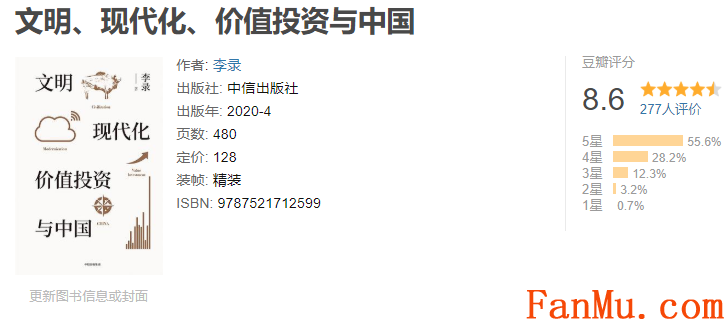
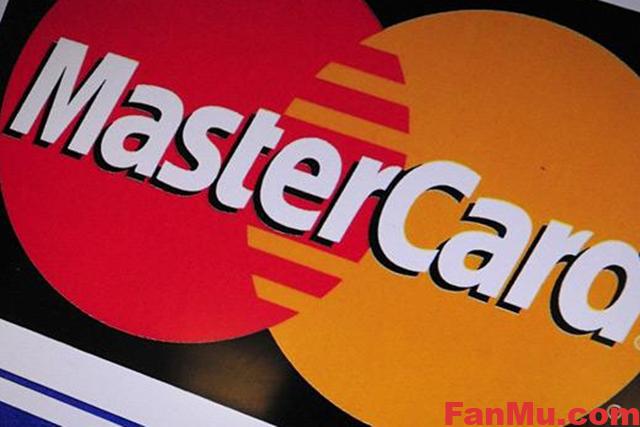
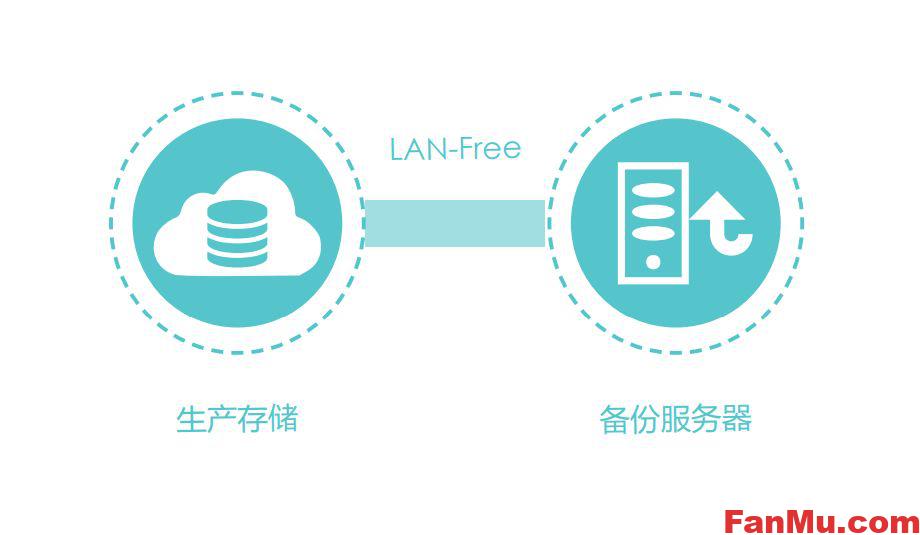

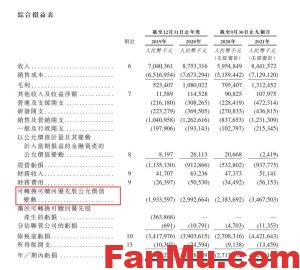
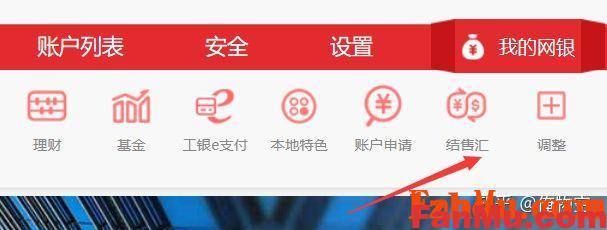

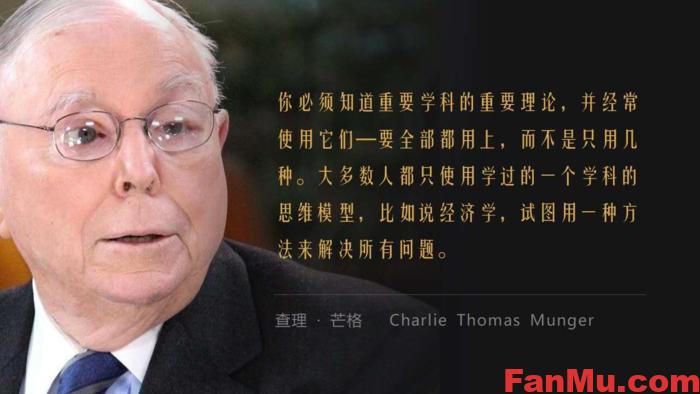
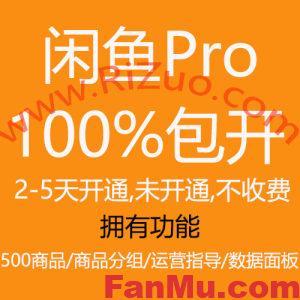
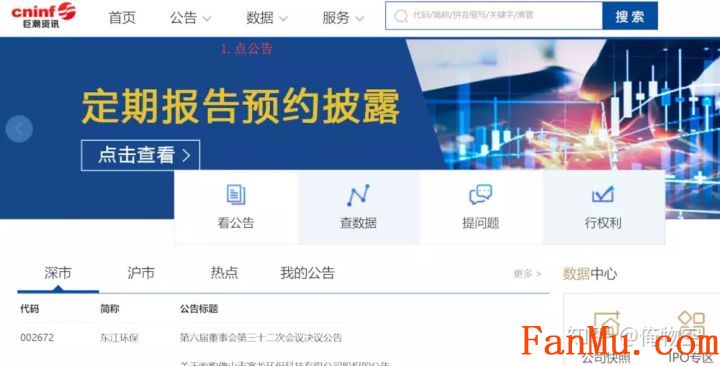
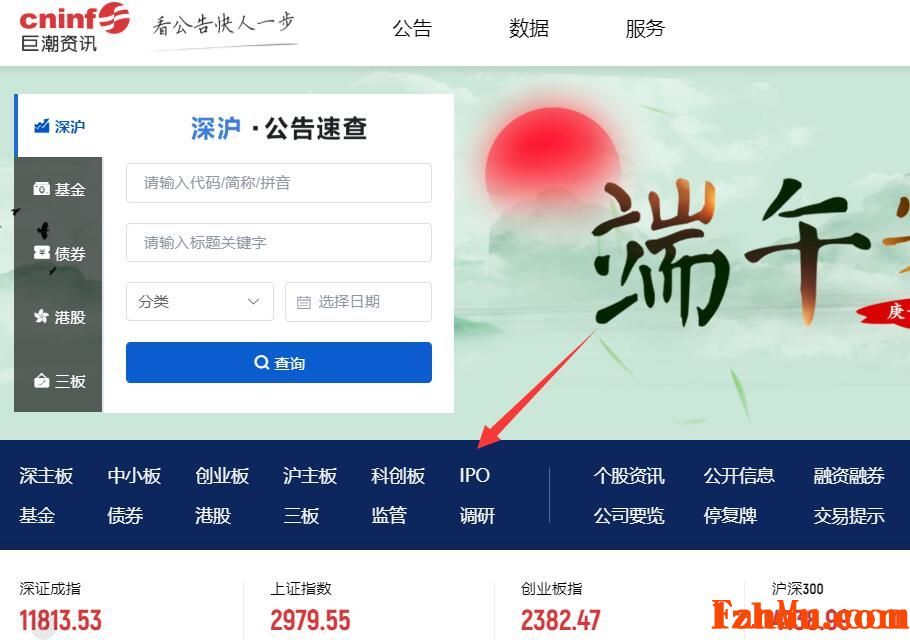
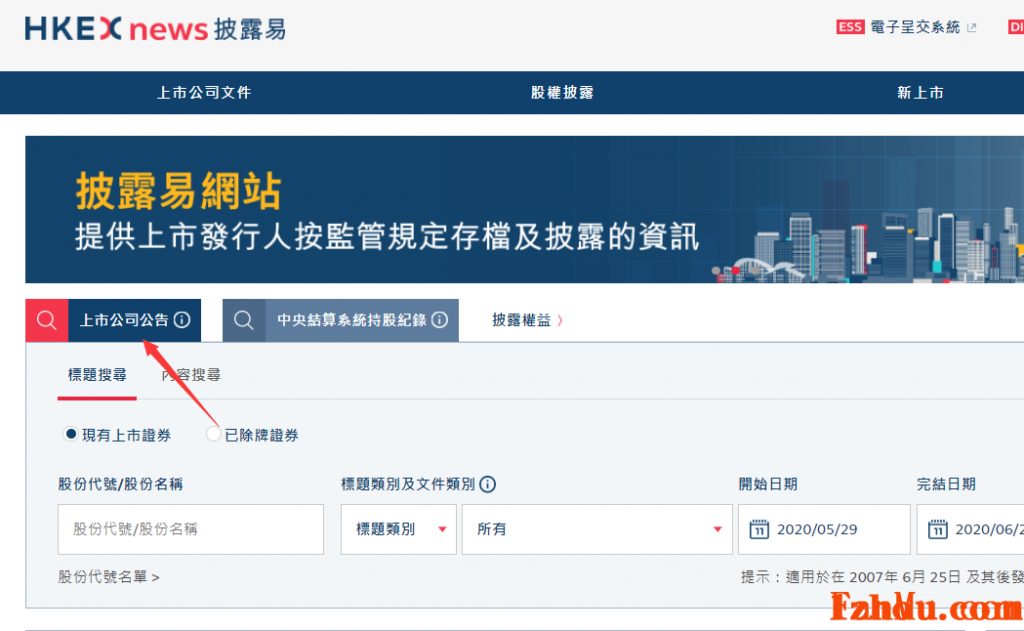

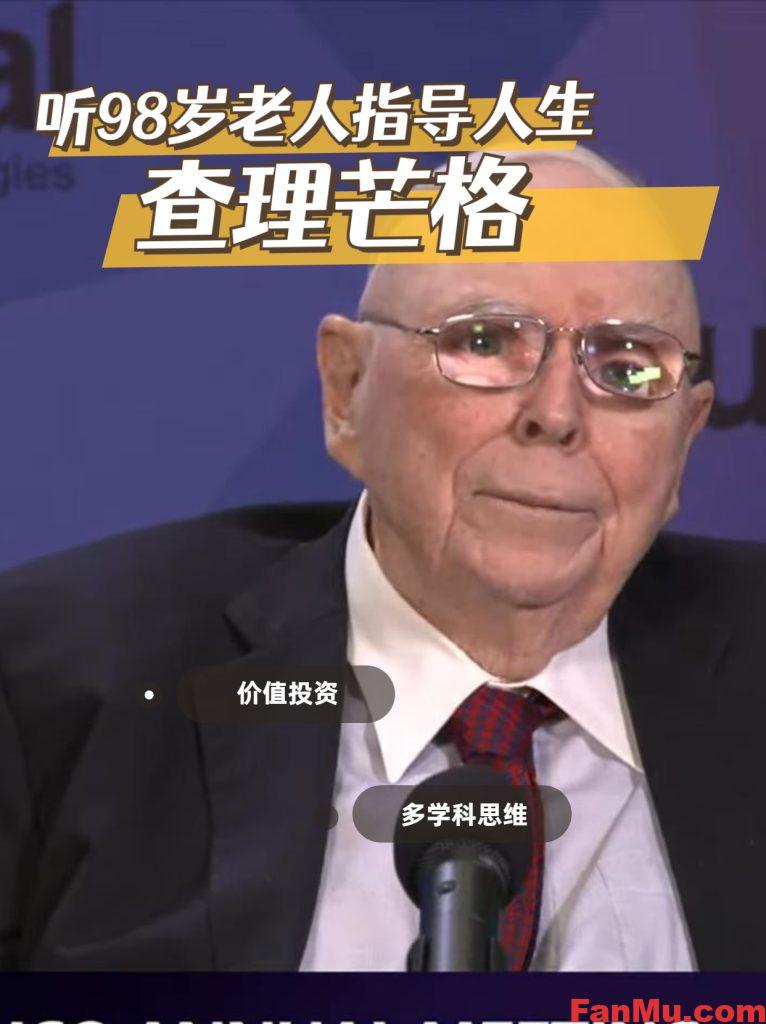
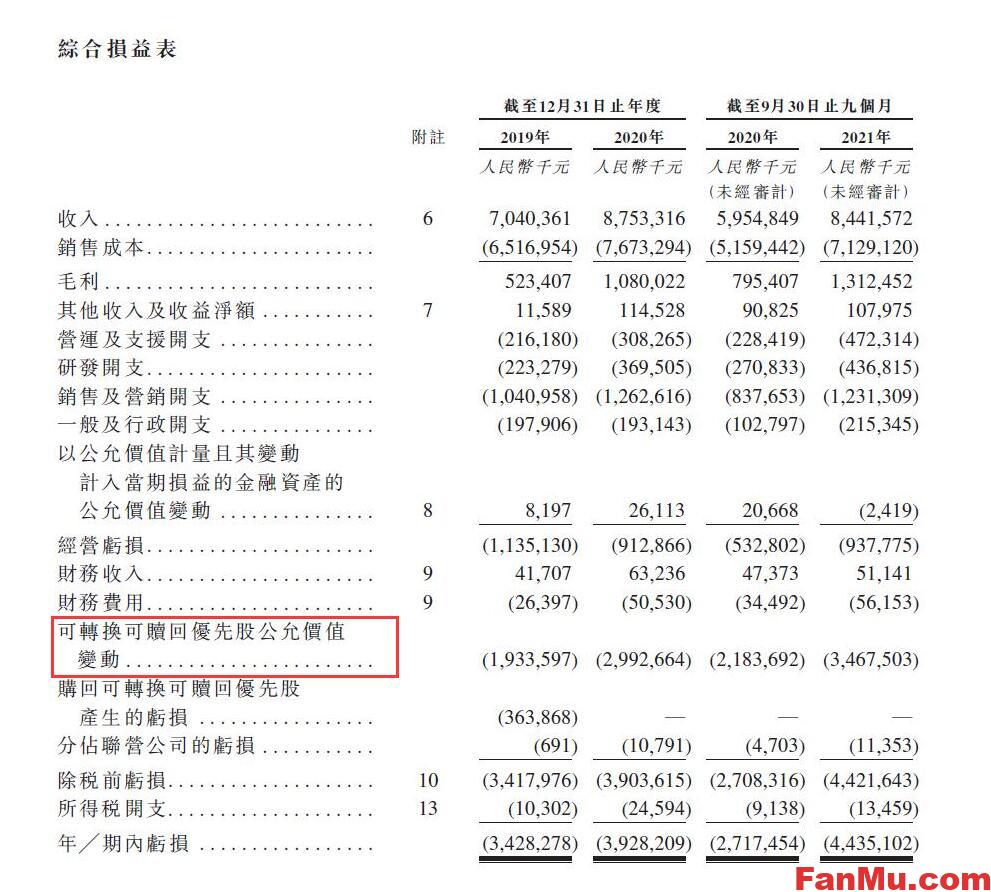


暂无评论内容